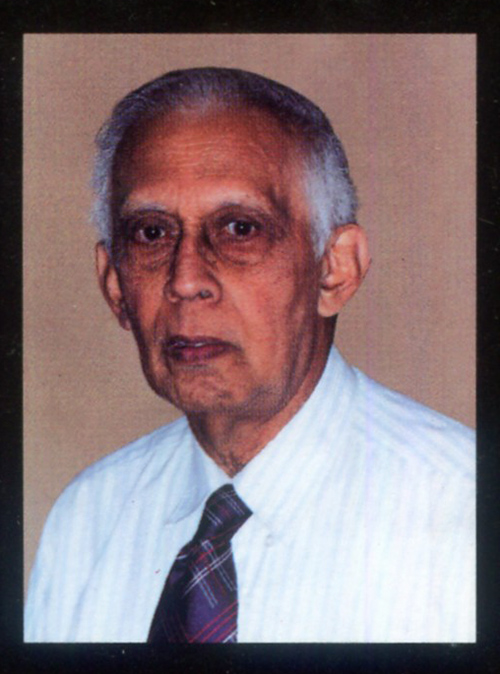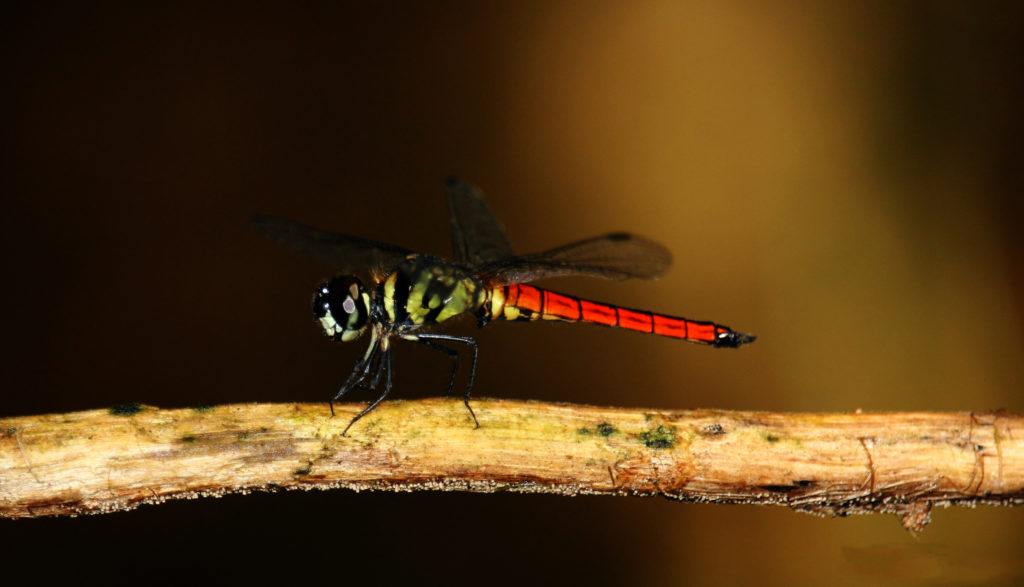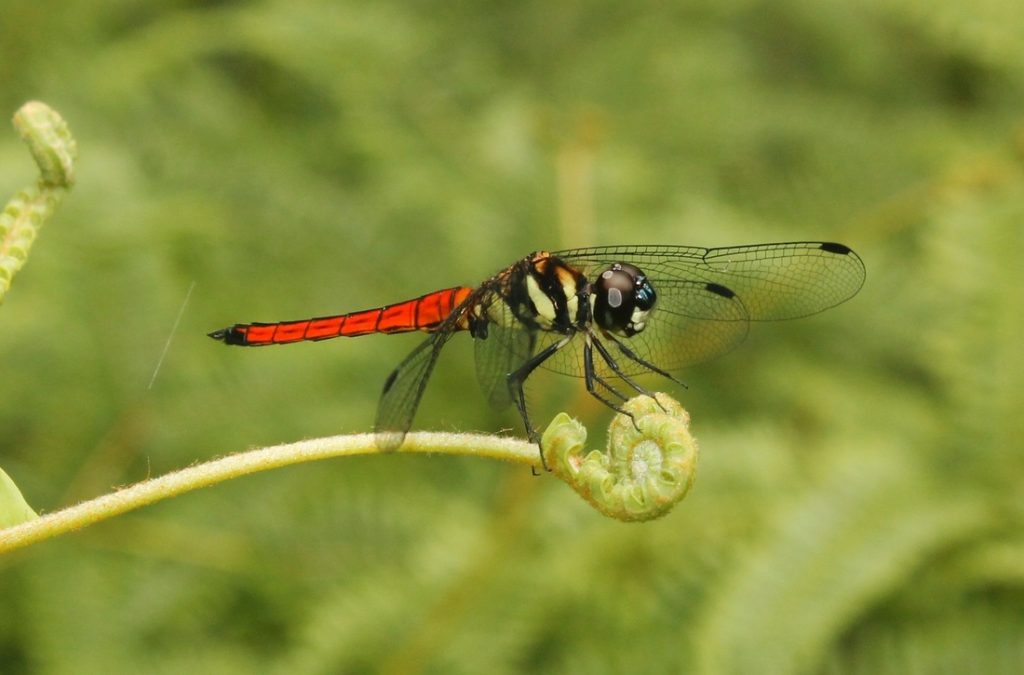The story of the pioneer dragonfly researcher in Sri Lanka
 Joining the list of illustrious authors in the De Fonseka family is Terrence de Fonseka, son of Arthur Donald De Fonseka, whose pioneering book on the Dragonflies of Sri Lanka (2000) is still referred to by researchers today. The book is the first comprehensive review of the odonatan (dragonflies and damselflies) of Sri Lanka. It draws together information on taxonomy, distribution and ecology as available at that time. Terrence researched, collated and published literature scattered amongst periodicals and technical papers, which were not easily accessible to a lay reader.
Joining the list of illustrious authors in the De Fonseka family is Terrence de Fonseka, son of Arthur Donald De Fonseka, whose pioneering book on the Dragonflies of Sri Lanka (2000) is still referred to by researchers today. The book is the first comprehensive review of the odonatan (dragonflies and damselflies) of Sri Lanka. It draws together information on taxonomy, distribution and ecology as available at that time. Terrence researched, collated and published literature scattered amongst periodicals and technical papers, which were not easily accessible to a lay reader.
The book included complete keys to 117 species of dragonflies and damselflies recorded from the island. With subsequent research, this has now expanded to a total of 120 Ordonate species being described from Sri Lanka to date. There are more new species in the process of description (van Der Porten N. & Karen Conniff 2012). Out of described 120 there are 48 endemic species and additional 8 endemic subspecies. The list is growing with the renewed interest on dragonfly research in recent years.
Both dragonflies and damselflies are collectively classified under the order odonata. The word odonata is derived from the Greek word odon which means tooth, as dragonflies and damselflies, have toothed mandibles. Dragonflies are known as ‘Bathkoora’ (suborder anisoptera) and damselflies are known as ‘Ginikoora’ (suborder zygoptera) in the Sinhalese language.
Writing the foreword to the book, Terrence mentions the two main aims in writing the book. The first and the lesser importance to him was to bring together what little is known about them and so provide a reference book for those interested. More importantly he believed that doing so will lead to an interest in this special group of insects. How true this was is emphasized by Gihan de Silva Wijeratne, eminent naturalist, wildlife photographer and author, who later on went on to publish an illustrated field guide to the Dragonflies of Sri Lanka.
‘I was in correspondence by email with Priyantha Wijesinghe, an entomologist working with the Natural History Museum. I cannot think of anyone who is more knowledgeable on Sri Lanka’s natural history. I wrote to him that it was such a pity that Sri Lanka did not have a field guide to dragonflies and said that if I ever return to Sri Lanka, that its a project I would like to work on. One day, he emailed me to say that the book I wanted may be now available. Terence de Fonseka, a Sri Lanka resident in London had compiled a book on dragonflies. I met Terence at his home on Sunday 8th February 1998 in London and bought a copy of his book (dated August 1997), specially printed for me on his desktop printer at home and spiral bound. I would have been one of the first customers for the book. On that visit, I also took with me books published by the Wildlife Heritage Trust (WHT) managed by Rohan Pethiyagoda, the man who ushered in a renaissance in Sri Lankan bio-diversity exploration. Terence was also a member of the British Dragonfly Society. Terence and I had a long chat and he explained that all he had done was to compile the available literature into a single volume. But he cautioned me that he had had no time to undertake any field work in Sri Lanka or to attempt a lay-person friendly field guide. Subsequently, in 2000, Rohan Pethiyagoda published his book through the Wildlife Heritage Trust. Tragically, Terence de Fonseka passed away a day before the book came out from the printers.’
Terrence de Fonseka
 Terence de Fonseka was born on 6th September 1919, the second in a family of six children, in Kalutara, a coastal town in south west Sri Lanka, the family seat of the De Fonseka families. His father Arthur Donald De Fonseka was a legal advocate. Terence was educated at Holy Cross College, Kalutara, and St Peter’s College, Colombo. He won an Entrance Scholarship to University College Colombo and obtained a degree in Zoology from the University of London. He served for two years as a Graduate Probationer in the Department of Agriculture and entered the Ceylon Civil Service in 1945, serving in a number of government departments, including the Department of Fisheries where, as Director, he initiated a very successful programme for mechanisation of fishing craft in the island. He served as Permanent Secretary to the Ministries of Commerce, Nationalised Services and Social Services until retirement in 1970. Terence, his wife and son then emigrated to England, where he worked for the Department of Health until his full retirement in 1984.
Terence de Fonseka was born on 6th September 1919, the second in a family of six children, in Kalutara, a coastal town in south west Sri Lanka, the family seat of the De Fonseka families. His father Arthur Donald De Fonseka was a legal advocate. Terence was educated at Holy Cross College, Kalutara, and St Peter’s College, Colombo. He won an Entrance Scholarship to University College Colombo and obtained a degree in Zoology from the University of London. He served for two years as a Graduate Probationer in the Department of Agriculture and entered the Ceylon Civil Service in 1945, serving in a number of government departments, including the Department of Fisheries where, as Director, he initiated a very successful programme for mechanisation of fishing craft in the island. He served as Permanent Secretary to the Ministries of Commerce, Nationalised Services and Social Services until retirement in 1970. Terence, his wife and son then emigrated to England, where he worked for the Department of Health until his full retirement in 1984.
He lived in retirement in Finchley, north London with his wife, Irangani. It was during this period that he embarked on the seminal work on Dragonflies. The book which was completed around 1997 was published and released in early 2000 with the assistance of Rohan Pethiyagoda of WHT Publications. Sadly Terrence died on 21st March 2000 in London, just a day before the launch of his book. If he was alive he would have been happy to see the resurgence in interest on dragonflies of Sri Lanka, which his book generated.
Sri Lanka Vermilion Forester (Lyriothemis defonsekai)


In recognition of his pioneering work, an endemic dragonfly discovered a few years later in the forests of Sinharaja has been named after him. The dragonfly species is named Sri Lanka vermilion forester (Lyriothemis defonsekai). This species has been described in 2009. It was discovered from Sinharaja Forest and is found only in a few localities. The male (image shown below) has a bright vermilion-red abdomen, hence the name. The thorax is yellow and has black oblique markings.
It is placed in the Critically Endangered (CR) category in the National Red Data list.
Reference:
- de Silva Wijeyeratne, G. (2009). The Dragons of Lanka. The history behind the development of Dragonfly Watching in Sri Lanka.
Hi Magazine. August 2009. Series 7, Volume 3. Page 182-183. ISSN 1800-0711. - Andress, https://natuurtijdschriften.nl/pub/593671
- Biodiversity of Sri Lanka, https://biodiversityofsrilanka.blogspot.com/p/dragonfly-order-odonata-diversity-of_1479.html
- Nature Notes -Jagath Gunawardana (Facebook)
- Dilrukshi Handunnetti, More discoveries, more threats for Sri Lanka’s dragonflies and damselflies, November 2019,
https://news.mongabay.com/2019/11/more-discoveries-more-threats-for-sri-lankas-dragonflies-and-damselflies/ - Image courtesy of Amila Prasanna Smanapala (Internet)
.